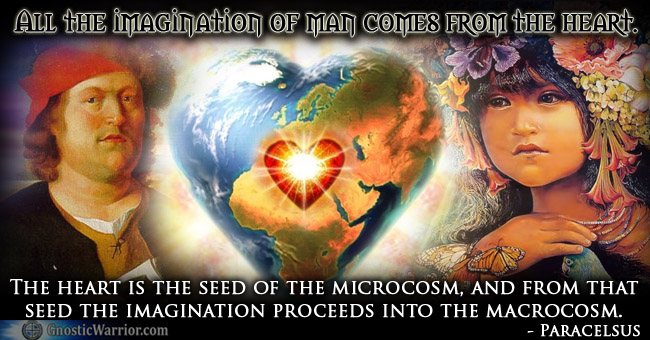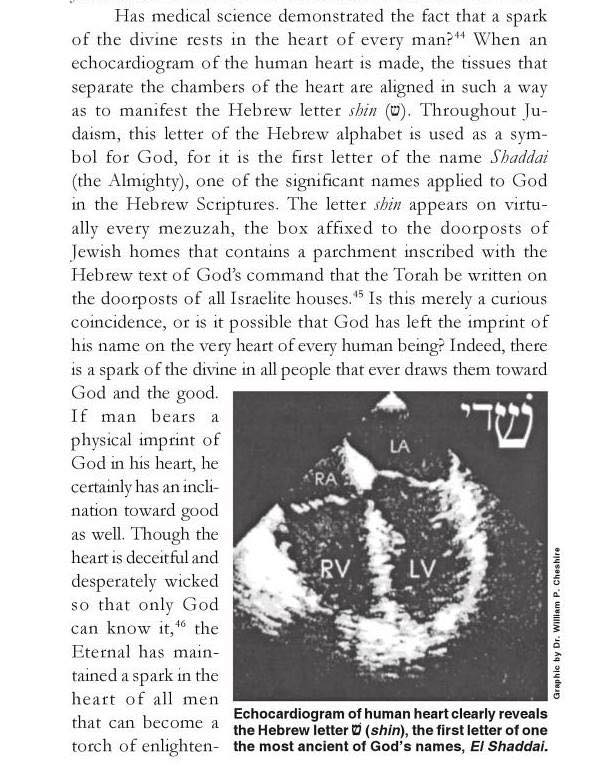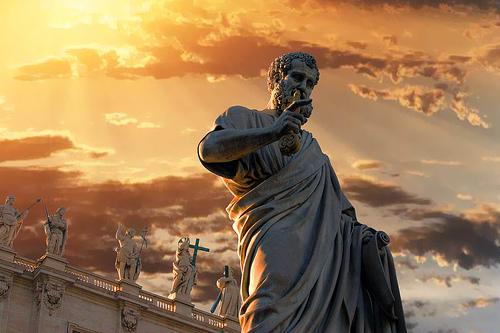The Sign of Jonah tells us that like Jonah, who was “three days and three nights in the belly of the great fish, so the Son of Man will be three days and three nights in the heart of the earth.” Here, we find the allegorical story of the Son of Man who finds Leviathon’s (Leviathan) inner power being a pearl representing the spiritual light in which he was tasked to capture to defeat the Beast.

Suppose we are to look back at ancient translations of the Bible. In that case, we will find that the English phrase “heart of the earth” had formerly been written in Latin as “IN CORDE TERRA” as early as the 8th century and is similarly translated in the 9th century via the Slavic version by the two brothers and Byzantine Christian theologians, Saint Cyril and Methodius as “W SERCU ZIEMI,” changing it to the “Heart of the Earth.”
The Latin term “IN CORDE TERRA” means “in or within ground ropes or earth ropes,” which would align with many other biblical passages and the Ancient Greek Tartarus concept. In my previous article, Tartarus: The Fungal Legislators of the Final Judgment, I explain how Greek writers described Tartarus as being within the earth, an “unfruitful sea (pontos) where there are shining gates and an immoveable threshold of bronze having unending roots, and it is grown of itself” and is described as the unbounded first-existing entity from which the light and the cosmos are born.
The concept of the unending roots of Tartarus within the earth would align perfectly with the Latin term “IN CORDE TERRA (In or within ground ropes or earth ropes).” In the Scripture, Tartarus (Tartaros) is said to be the place where 200 fallen Watchers (angels) are imprisoned in an underground abyss reserved for demons, sinners, and the dead. In Greek mythology, it is the deep abyss and a type of underground dungeon of torment and suffering for the wicked and as the prison for the Titans and, in later myths, for mortals who committed unforgivable sins. According to the Greek poet’s Homer and Hesiod, Tartarus is a spherical force reaching the great cosmic pit beneath the earth.
This is also the lair of Leviathan who is also synonymous with the Devil, the Serpent, Dragon, and a Sea Monster. For example, it is called נחש הבריח, the elusive serpent (Isa. 27:1), and in Isaiah 27:1, where it is characterized as “the swift serpent and the crooked serpent.” We learn that serpents are said to “eat dust,” see (Genesis 3:14; Isaiah 65:25; Micah 7:17), and in Job 3:8, it denotes the dragon, which is an enemy of light according to Eastern tradition. In Psalm 74:14 and Job 3:8; it is God’s “plaything” (see Ps 104:26) and the most dangerous creature on earth, whose power only God comprehends (Job 40:25-41:26).
It was under the form of a serpent that the devil seduced Eve; hence in Scripture, Satan is called “the old serpent.” (Revelation 12:9), and with the tradition of the Fall, the serpent all through the East became the emblem of the spirit of evil.
As I explained in my article, “Azazael: The Science of the Seed of Satan,” Russian author, Professor Andrei Orlov explains that Azazel’s “corrupted domain” is described as a “likeness or resemblance of heaven” and is located beneath Abraham’s feet which happens to also be the Lair of Leviathon. Azazael is also the leader of the 200 fallen angels.
Azazel is the wilderness demon who taught mankind metal work (8 1. 2) and wickedness (9 e 10 s). He is told by Enoch that he should have no peace (13 1); chains are prepared for him and his hosts, that they may be bound and cast into the abyss (54 1) and to be judged by the Messiah (55 4).
The Revelation of St. John talks of angels “holding the four winds of the earth” (Rev. vii. 1),” of “the angels of the waters” (Rev. xvi. 5; cf. John v. 4), and of “another angel that hath power over fire” (Rev. xiv. 18). In later magical treatises, Azazel and Azael are “reckoned among the genii that preside over the elements” (Bib. Encyc. of McC. and S., art. Azazel).
With that said, the story of Jonah being three days and three nights in the belly of a fish and so will the “son of man” but in the heart of the earth is when we are introduced to a hive mind force of a beast-like creature of the sea named Leviathon. Leviathon represents the same Ancient Greek concept of the “unbounded first-existing entity” being Tartarus. The same domain where Azael is “reckoned among the genii that preside over the elements” (
As I mentioned above, Jonah was tasked to capture the light from Levaithon, and this is not just any old light but the “light of the righteous.” It is the command of God who appointed the fish to swallow Jonah in an attempt to save him since the Six Days of Creation, as it says: “And God appointed a huge fish to swallow Jonah.” It was if by natural selection in the form of God, Jonah was מנה, “to appoint” or “designated” formerly and now the “Son of Man” as the prophet in the End Days who would descend into the heart of the earth as Jonah spent three days and three nights in the belly of a whale.
When Jonah was taken into the mouth of the fish, he said, “Well, I saved you from the maw of the Leviathan, so now show me everything in the seas and the depths.”
Jonah being swallowed and going into the heart of the earth in conjunction with the six days of creation and being saved from the maw of Leviathan is a similar story to that of Moses in Genesis who calls for a miracle, a new creation (Beriah) – we have not seen this root since the Six Days of Creation (Genesis 1).
WHY DOES THE THE EARTH HAVE THE ABILITY TO PUNISH AND SWALLOW PEOPLE
According to the midrash, instead of the heart of the earth of the New Testament, we are instead introduced to the “mouth of the earth (pi ha-‘aretz),” which one of the ten things created at Twilight on the Sixth Day of Creation (M. Avot 5:6). Since the beginning of Primordial Time, it has been waiting to open up its maw to swallow the rebels to undermine their claim and testify to Moses’ divinely ordained leadership.
These stories show us that the earth, or more appropriately, the mouth or maw is a place of punishment via natural laws of which Moses was the chosen legislator, “for dust you are and to dust you must return” (Gen. 3:19), and we learn it is at the gravesite where memory endures. It is here where the earth is called “a land that consumes its inhabitants” (13:32) and splits asunder and swallows them and all their possessions, and “the earth closed over them and they vanished from the midst of the congregation” (Num. 16:33).
Throughout the Hebrew Bible (Tanakh), we find that the earth is characterized as being alive and having the ability to legislate humans with its mouth that swallows or vomits up the casualties of human tragedy as its cries out to its chosen messiahs to help legislate the human race. The “mouth of the earth” swallowed the combatants and closed up again, leaving no trace, and the violators of God’s Laws concerned with holiness would contaminate the Land and force it to vomit the people out (Lev. 18:28, 20:22).
One of the first victims of human tragedy in the Scripture is Cain who, after killing his brother Abel, the earth opened her mouth to swallow the blood of Abel, God then cursed ground under Cain, and he is exiled condemned to wander the earth as a fugitive (Gen. 4:10-11). Job cries out for the earth not to cover his blood or silence his cries so that the injustice of his suffering might ascend to Heaven (Job 16:18).
In Numbers, we learn that Moses has a type of supernatural power as being not only connected to the earth but being able to make laws and pronounce judgments like when he had spoken about the fate of mankind as the ground bursting open and swallowing them up and, and they go down alive into Sheol. We learn that after Moses had spoken these words (curse), the ground under them was split asunder, and the earth opened open its mouth and swallowed them up with their households, all Korah’s people, and all their possessions.
They went down alive into Sheol, with all that belonged to them; the earth closed over them, and they vanished from the midst of the congregation. All Israel around them fled at their shrieks, for they said, “The earth might swallow us!” (Num. 16:29-34).
The violation of God’s Laws concerned with holiness that might contaminate the Land and force it to vomit the people out (Lev. 18:28, 20:22). But now, those who rejected the whole Exodus project are swallowed alive. In refusing to test the ground to the Promised Land, they go down, down, down, to Sheol, to “the undiscovered country from whose bourn no traveler returns.”
As I mentioned above, in the story of Leviathan, we are introduced to the word maw and is now translated using the word tannin in the Hebrew Bible. The Hebrew passage describing the tannin takes the place of a Ugaritic one telling of “the encircler” or “the mighty one with seven heads” (šlyṭ d.šbʿt rašm).
Aaron’s staff becomes tannin in the Book of Exodus (Ex 7:9-12), it is used in the meaning “snake” in the Book of Deuteronomy (Deut 32:33) and Psalms (Ps 91:13). It represents Nebuchadnezzar I (the king of Babylon) in Jeremiah (Jer 51:34) and Pharaoh in Ezekiel (Ezek 29:3, 32:2). In the Book of Job (Job 7:12), the protagonist questions God “Am I the sea or the sea dragon that you have set a guard over me?
The word tannin is frequently associated with a type of supernatural authority within man that acts in concert with serpents, crocodiles, dragons, and poisons. Let me also add that the word Leviathan can also be written as Levitan, and we find the words “Levi and tan” used to show what I contend is the connection in which “Levi means serpent and tan signifies its poison.”
For example, we read in Deuteronomy 32:33: “But their vine is from the vine of Sodom and from the fields of Gomorrah. Their grapes are poisonous; their clusters are bitter. Their wine is the venom of serpents, the deadly poison of cobras. Have I not stored up these things, sealed up within My vaults?”
And in Psalm 58:4, “Their venom is like the venom of a snake, like a cobra that shuts its ears.”
As I have discussed in many other articles and my research into Tartarus, I contend that the word tannin can be connected to a supernatural real-life microscopic entity we know of as fungi in Latin and molds in English. These same said fungi/molds produce some of the most powerful and deadly poisons known to humankind called “mycotoxins.”
They also can turn water into wine, make gall, and cause people to sin and become bitter as if the Devil or Leviathan rules them. The venom, i.e., poisons of fungi/molds, we can say, is like a snake’s venom and can also steal people’s consciousness like a cobra that shuts its ears.
Like Leviathan, their lair is within the earth, and it is here where we find the ‘heart of the earth” in which they rule and legislate all life on earth via natural laws, including humans.
This makes sense because tannin is made through fermentation (artificial or manmade decay) via microbial production, especially from fungi/molds. These fungi produce a yellowish or brownish bitter-tasting organic substance present in some galls, barks, and other plant tissues of gallic acid derivatives used in leather production and ink manufacture.
Now let’s get back to Jesus and the title of Son of Man…
The Son of Man and the Son of God are the two main appellations given to the LORD Jesus concerning his ministry. The Son of God would be his relation to the Father or God in the Heavens. He brings the holy fire down to the people as his spiritual mission, and the Son of Man would be both Jesus’s connection and his dominion over the earth i.e., the material world.
In the Scripture, when he first asserts his power to forgive sins, He called Himself the Son of man.
He comes from the Ancient days and from heaven in Daniel’s vision to assume his role on earth: “Behold there came with the clouds of heaven one like unto a Son of man, and He came even to the Ancient of Days” (Dan.7:13). So then in Psalm, it begins and ends with reference to the “earth,” and in speaking of “the Son of Man,” we read, “Thou madest him to have dominion over the works of Thy hands.”
In the Book of Revelation, the “Son of Man” is given the role of Judge in the Final Judgment as it relates to earthly affairs and materiality. (i.13 and xiv.14) The first use of the title in the New Testament is in Matt viii.20, where it is said;
“The Son of Man hath nowhere to lay His head,” and in the end in Revelation xiv.14, the Son of Man is seen “having on His head a golden crown.” Those with ears to hear during the Apocalypse relate to the coming of “the Son of Man” to exercise judgment in and assume dominion over the earth.
Both verses are connected with Jesus’ head and with the earth, while the latter is specifically associated with both judgments and assuming dominion over the whole earth as King. In this sense, he is not enthroned in heaven, but standing, “the Son of man, standing on the right hand of God” (Acts 7:56).
The Son of Man concerning the “Heart of the Earth” is a term used in contrast to the Son of God or Christ who expresses his eternal relationship to the Father, Psalm 2:7 Daniel 3:25 Luke 1:35 John 1:18,34. Christ always claimed to be the only-begotten Son of the Father, Matthew 4:3 8:29 27:54 John 3:16-18; and the Jews rightly understood him as thus making himself equal with God, John 5:18 10:30-33.
The evolution of this title from being just a Son of God to become a Judge and King ie. Son of Man is further proved in John v.25-27 where it is said: “Verily, I say unto you, the hour is coming, and now is, when the dead shall hear the voice of THE SON OF GOD, and they that hear shall live. For as the Father hath life in Himself, so hath He given to the Son to have life in Himself, and hath given Him authority to execute judgment also; because He is THE SON OF MAN.”
This messianic figure is said to arrive during an evil and adulterous generation. The only sign we are given is in Mathew, where it is said that he comes out of the “Belly of the Great Fish” that is connected to the “heart of the earth.”
Jesus replied, “A wicked and adulterous generation demands a sign, but none will be given it except the sign of the prophet Jonah. For as Jonah was three days and three nights in the belly of the great fish, so the Son of Man will be three days and three nights in the heart of the earth. The men of Nineveh will stand at the judgment with this generation and condemn it; for they repented at the preaching of Jonah, and now One greater than Jonah is here.”
And it was by the bold and unequivocal appropriation of this verse that Jesus brought upon Himself the judgment of the council (Matt.26:64; Mark 19:62).

Moe is the founder of GnosticWarrior.com. He is a father, husband, author, martial arts black belt, and an expert in Gnosticism, the occult, and esotericism.








